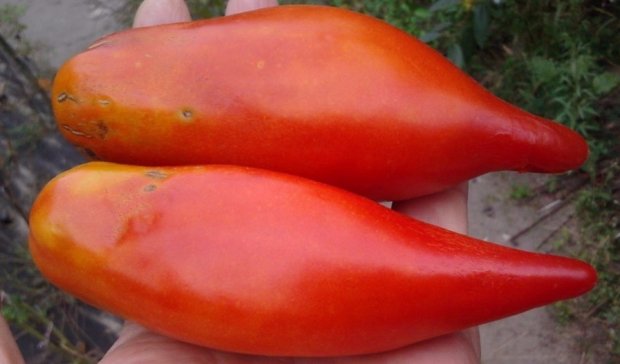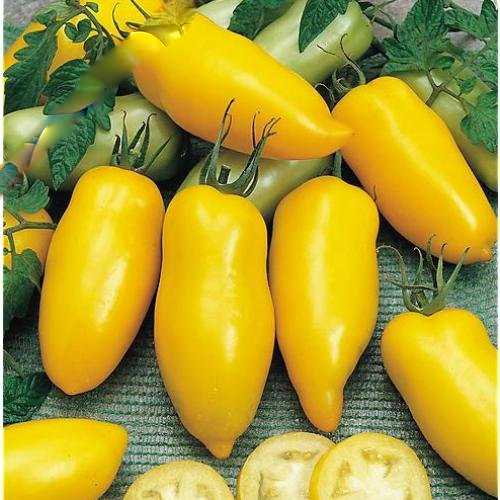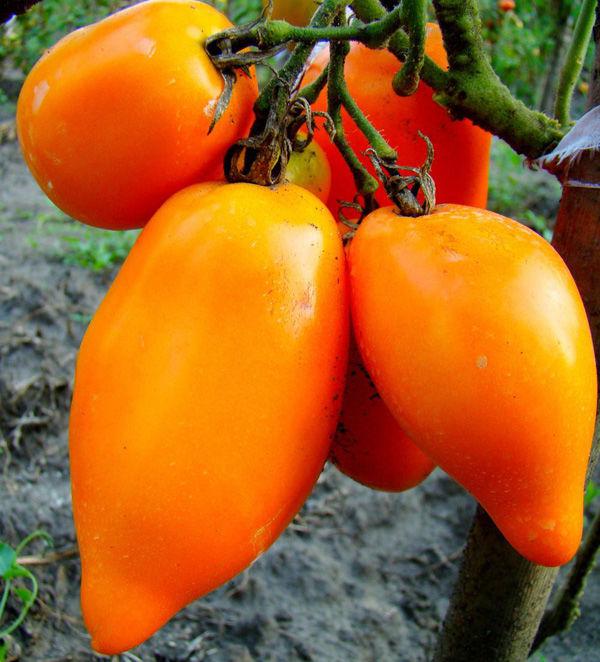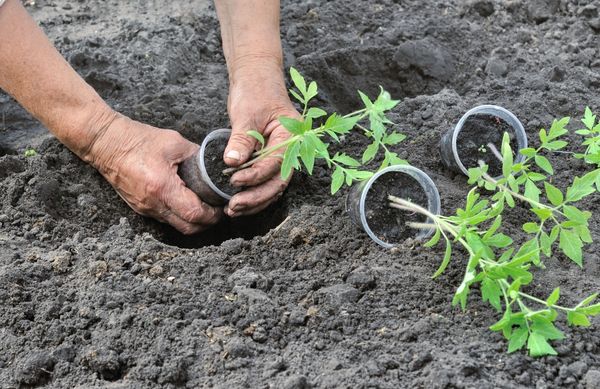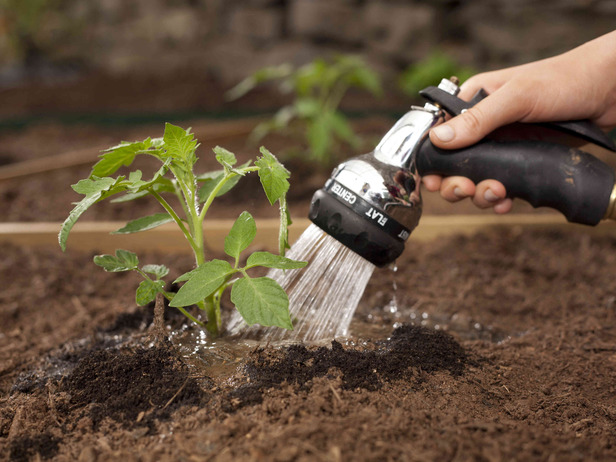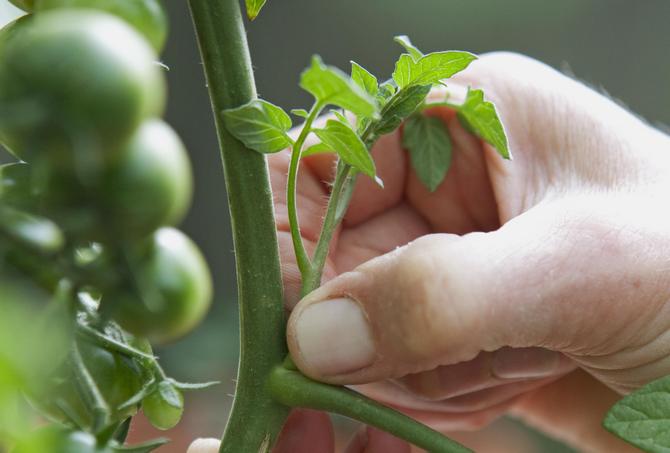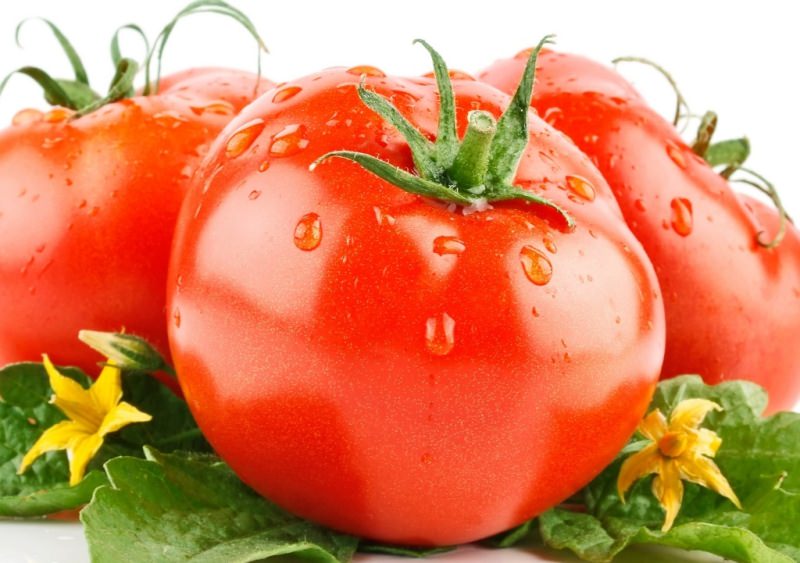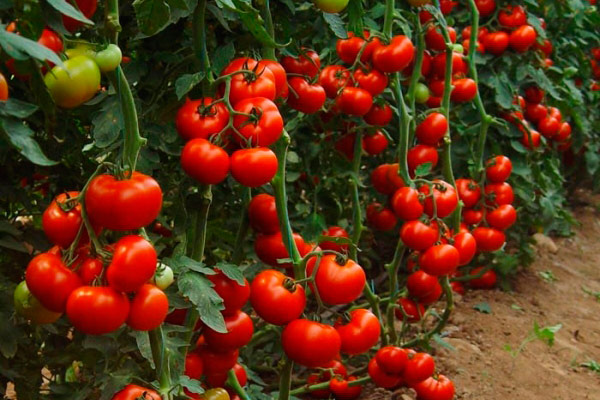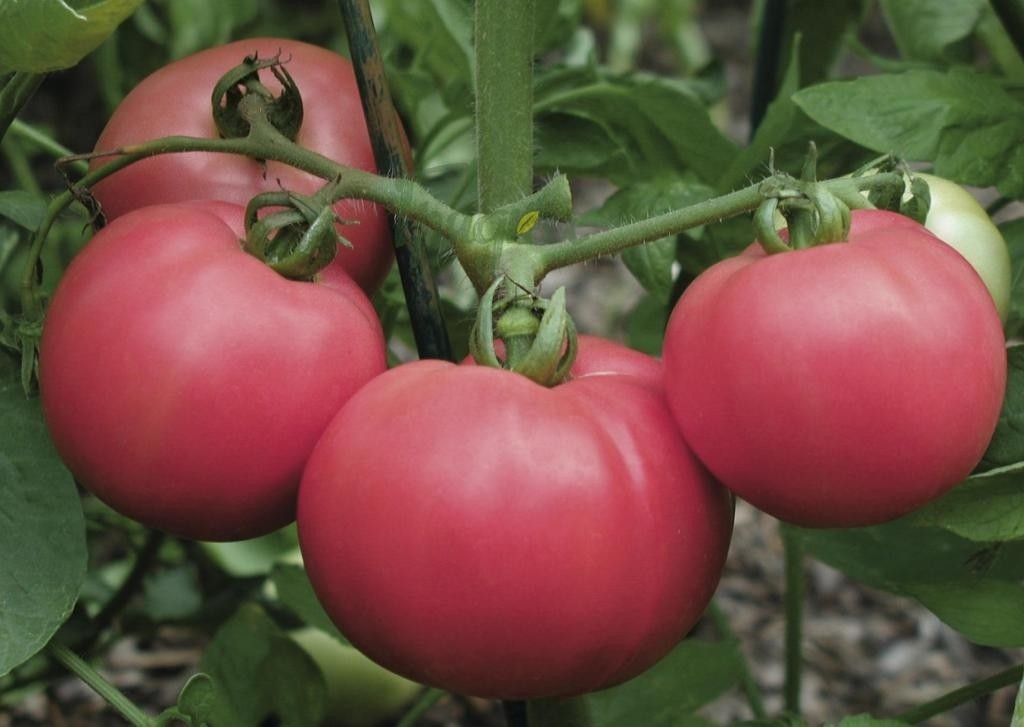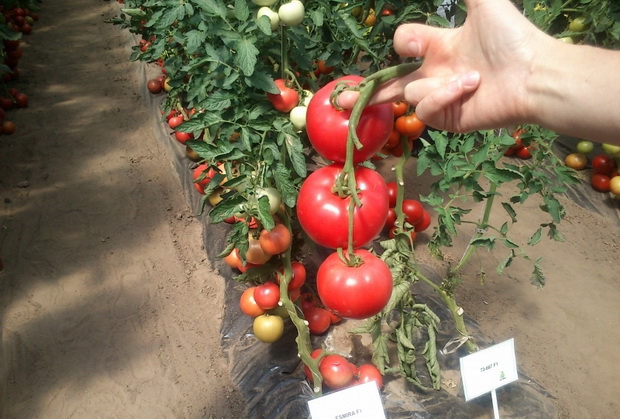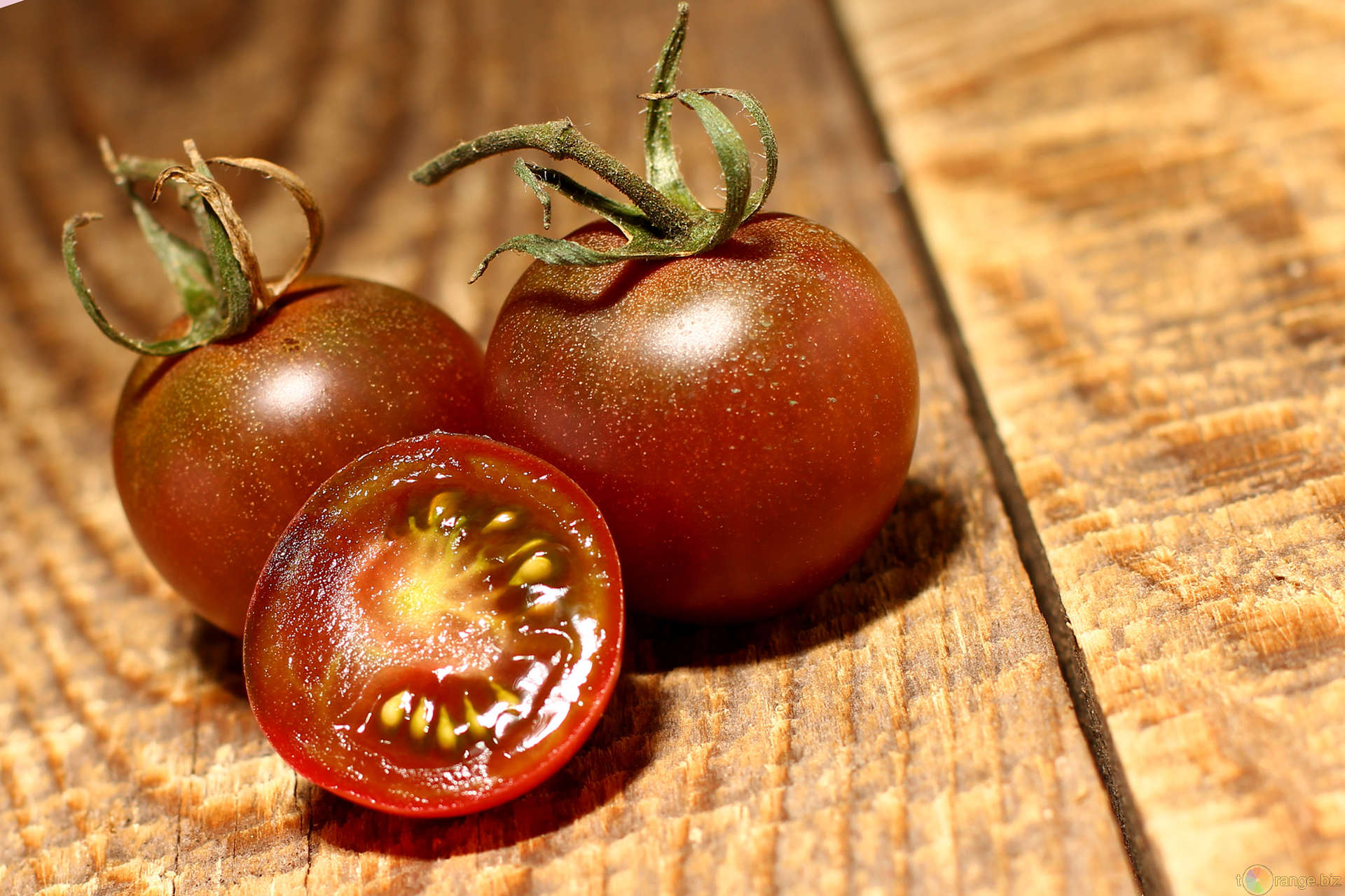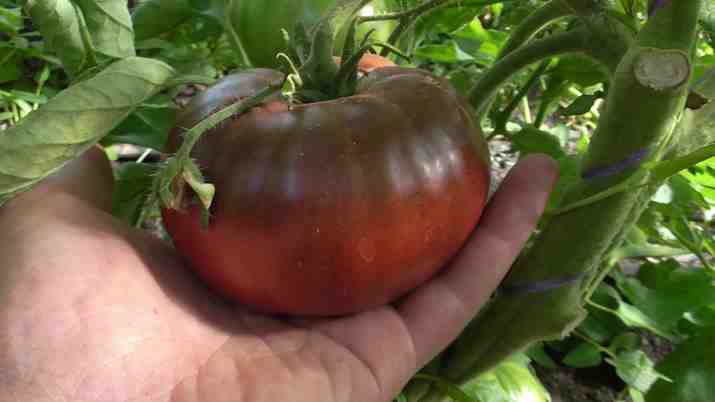Content:
Most of us are used to the fact that tomatoes are round and red in color. Whereas the family of this vegetable has numerous species that have different shapes and colors. One of these striking representatives is the Pepper Tomato - it looks like sweet peppers in appearance and even in section (hence the name).
The Russian hybrid was bred relatively recently (2001) by crossing several varieties, but the basis is the Slivka variety.
Pepper tomatoes can be used both for canning and consumed fresh in salads. They also make excellent tomato juice.
Description and characteristics
Having gained relatively recently popularity, the Pepper tomato (description and characteristics of the variety will be presented below) began to be successfully grown by Russian gardeners. The variety is classified as tall, since the maximum height of the bush reaches one and a half meters, or even higher. Therefore, an adult plant needs good support. Do not forget to pinch, as the bush branches heavily. The bush also requires support for the reason that it has giant fruits that have orange, yellow, red or pink colors, like peppers. A striped tomato, usually red with yellowish veins, looks very interesting from the point of view of aesthetics and cooking.
The first brush is laid somewhere between 6 and 11 leaves, the next brush is placed every three leaves. Each cluster grows up to 7-8 fleshy with a sweetish taste, with a small amount of seeds of large elongated fruits. The average weight of the fruit is about 80 grams with a length of up to 15 cm. Together with an elongated shape, this gives an excellent opportunity to preserve them whole without cutting.
The variety is productive - up to 10 kg or more can be collected from one square of plantings. Refers to mid-season - from planting to harvesting the first harvest takes about 110-115 days. Fruiting lasts from mid-July to the last days of October.
The variety is frost-resistant, so it can be grown not only in a greenhouse, but also in the open field. This variety will not only give fruit, but also decorate your garden with its uniqueness. In addition, during the practice, the tomato showed an excellent property - resistance to almost all diseases of tomatoes and pests.
Successful varieties of tomato
Pepper varieties of tomatoes are classified into subspecies, but we will indicate here only those that have passed official registration:
- Tomato variety Pepper. Registered in 2001. Mid-season indeterminate with good yield (up to 8 kg on average). Fruits are small in size - 70-80 grams, but with good care, you can get one hundred grams of fruits. Usually stuffed dishes are prepared from them, since the walls of the fruits are thick and dense;
- Giant. A variety of Siberian selection. The name speaks for itself - the weight of the fruit is about 200 grams, three hundred grams of tomatoes are marked. When fully ripe, the fruits take on a deep red color. The tomato taste is sweet;
- Pepper yellow. This variety appeared in 2005. Also applies to indeterminate and mid-season. Fruits are small, dense, yellow in color. The variety is distinguished by its high resistance to heat and drought;
- Pepper orange. Also in 2005, breeders bred this variety. Indeterminate, therefore pinning and garter are required.Unlike the above-described variety, Orange fruits reach an average of 150 grams. Productivity - more than 9 kg per square, this is only in the open field. With the greenhouse method, the yield is even higher. A distinctive feature of the variety is its resistance to lack of lighting. Therefore, it can be planted in partial shade;
- Red Pepper. The variety was bred quite recently - in 2015. In addition to the color of the fruit, this variety is no different from the orange variety. Perhaps the yield is slightly higher and the color is more traditional for a tomato;
- Peppery raspberry. Also obtained in 2015. A distinctive feature of the variety is that it is determinant, that is, the height of the bush does not exceed one meter. At the same time, it is distinguished by large fruits (up to 250 grams) and high yield (in greenhouses, up to 15 kg per square are obtained from it). Early maturing variety, ripening time - up to 100 days.
Agrotechnics
First of all, we prepare seeds and soil for seedlings. Due to the fact that the variety belongs to hybrid, it will not be possible to prepare seeds on our own, we buy them only in the store. Therefore, you should not believe people who say that they cook Pepper seeds themselves. Remember that seeds cannot be obtained from hybrids.
There is a minus in such an acquisition - the cost. But there are much more advantages: store seeds do not require additional processing, and their germination is guaranteed by the agricultural company.
It is also recommended to take soil from the store. But you can save money and cook it yourself. For this you need:
- 1 bucket of well-rotted humus;
- 1 liter can of semi-matured sawdust;
- half-liter can of sand;
- 1 tbsp double superphosphate granules;
- 3 tbsp. l. wood ash.
All this must be thoroughly mixed with a bucket of garden soil. The soil is ready.
It must be decomposed into prepared containers, after which the seeds can be planted. The landing is carried out to a depth of no more than a centimeter. The containers must be placed in a room where the correct temperature regime is observed. In our case, the room needs to maintain +25 above zero. Seedlings should be planted in early March.
After two true leaves appear, the seedlings can be transplanted in separate containers. In open ground, disembarkation is carried out during May, depending on the region and climate, this can be done at the beginning of the month or at the end.
Experts recommend planting no more than four sprouts per square, in which case they will feel most comfortable. This means that they will give the maximum yield.
For planting in open ground, you need to choose lands with neutral acidity or slightly acidic. You can reduce the acidity of the soil with liming. It is advisable to first add ash or humus to the soil.
The best soil for Pepper is loam, in which the plant's root system develops well.
Care
Despite the fact that the Pepper tomato does not differ in high demands on care, it is still necessary to follow simple, but no less important recommendations. The main ones are the organization of correct watering and timely pinching.
Organization of watering
The yield depends on how the tomato is watered. The intensity of watering does not depend on the color of the tomato - both strong and yellow require the same amount of water. Of the capricious in this respect, we can single out the "Kubinsky" variety.
The intensity depends on the height of the variety. Low-growing ones are watered four times a season:
- Immediately after landing in the ground;
- The second time twenty days after the first watering;
- Third time after flowering;
- And for the last time at the end of June.
If the variety belongs to tall species, then watering is carried out a little more often. If the season is dry, then watering is done every three days.
Tomatoes will absorb water much better if watering is not carried out from above from a watering can, but water is poured into a trench that needs to be dug along the plantings. Thus, the roots will have access to moisture, and the water consumption will decrease significantly.
Usually a month after planting lateral roots are formed. At this time, it is recommended to feed the sprout with chicken droppings or manure. During flowering, ash must be added to the soil.
If the bushes are dry, then we feed them with nitrogen fertilizers. Sometimes it happens that they too quickly gain green mass to the detriment of fruiting, then phosphates will help.
Pinching procedure
When growing in open ground tomato Pepper, we pay special attention to the timely removal of stepchildren.
Stepsons are lateral processes. They are harmful in that nutrients and water are taken from the main stem. Because of this, gardeners are missing a large part of the harvest.
The stepsons need to be removed on time. Experienced gardeners recommend removing them while they are less than 5 cm. It is possible later, when they become much longer, but the longer the stepson removed, the more stress the plant itself will receive. In addition, the wound will be larger, this can lead to the death of the tomato.
The pinching procedure must be carried out in sunny weather, in such weather the wounds inflicted on the plant will heal much faster. This means that the plant will endure stress faster and easier.
In addition, you will need to prune new leaves that appear with the first flowers. They, like stepchildren, take water and trace elements, which again leads to a decrease in yield.
Diseases and pests
The peppercorn shows excellent disease resistance. But late blight can affect plantings. Especially if the plantings are growing at high humidity and low temperatures.
Treatment is carried out with fungicidal preparations. Prevention of the disease is as follows - we plant in well-ventilated sunny places, they should not be thickened.
Advantages and disadvantages of the variety
The advantages are as follows:
- Great taste;
- Good productivity;
- The variety belongs to the universal, it can be grown both in greenhouse conditions and in the open field;
- The fruit has an original shape, which is very appealing to many gardeners;
- Tomato fruit is fleshy with crumbly pulp and slightly sweetish taste;
- The fruits can be preserved, consumed fresh, boiled and baked.
Not without disadvantages:
- As you grow, the installation of trellises is required;
- Indeterminate varieties must be tied up constantly;
- Seed cost;
- The impossibility of self-procurement of seeds.
Concluding the story about an unusual variety of Pepper-shaped tomatoes, it is worth noting that, despite the rather large fruits of an unusual shape, thanks to which the tomatoes got their name, the hybrid described above is quite capricious in care, picky about soils.

